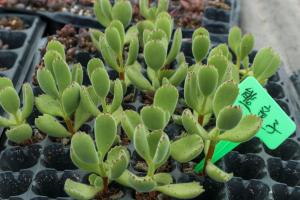How to Propagate Rubber Tree Plant
Rubber trees are known for their large, glossy leaves and their easy-to-care-for nature, which makes them popular houseplants. These tropical trees are native to southern Asia and are grown in many parts of the world. Propagating rubber tree plants is an easy and straightforward process. Here is a step-by-step guide on how to propagate a rubber tree plant.
1. Choose the Right Time
The best time to propagate a rubber tree plant is during the active growing season, which is typically late spring or early summer. During this time, the plant will be actively producing new growth, and this will make it easier for the cutting to grow roots and establish itself.
2. Collect the Cuttings
Using clean, sharp scissors, cut off a stem at least 6 inches long. Be sure to choose a stem that has a healthy and mature leaf attached to it. Make the cut at an angle to increase the surface area, which will improve the chances of the cutting rooting. Remove the leaves from the bottom half of the stem.
3. Prepare the Soil
Choose a well-draining potting mix that has a high percentage of peat moss. Fill a small pot or tray with the potting mix and moisten it lightly. Make a hole in the soil with a pencil or stick, and insert the cutting at least 1 inch deep. Gently firm the soil around the base of the cutting.
4. Care for the Cutting
Place the pot or tray in a warm, bright spot, but away from direct sunlight. Keep the soil moist but not waterlogged. You can cover the pot or tray with a plastic bag to retain moisture and create a humid environment for the cutting. Check the cutting regularly and remove any dead or yellowing leaves. After a few weeks, the cutting should start to root.
5. Transplant the Cutting
Once the cutting has developed roots, it is ready to be transplanted to a larger pot. Choose a pot that is slightly larger than the current one, and fill it with a well-draining potting mix. Gently remove the cutting from the old pot and place it in the new one. Water the plant and place it in a warm, bright spot, but away from direct sunlight.
6. Care for the New Plant
Now that the cutting has been transplanted, it is important to care for it properly. Rubber trees prefer bright, indirect light, so placing the plant near a window is ideal. Water the plant when the top inch of soil feels dry, and fertilize monthly with a balanced fertilizer. Prune the plant regularly to keep its shape and prevent it from getting too tall.
Propagating a rubber tree plant is easy and rewarding. With just a few simple steps, you can create a new plant from a mature one. These strong and beautiful plants are the perfect addition to any home, and with the proper care, they will thrive for many years to come. Happy propagating!

 how many times do yo...
how many times do yo... how many planted tre...
how many planted tre... how many pine trees ...
how many pine trees ... how many pecan trees...
how many pecan trees... how many plants comp...
how many plants comp... how many plants can ...
how many plants can ... how many plants and ...
how many plants and ... how many pepper plan...
how many pepper plan...






























